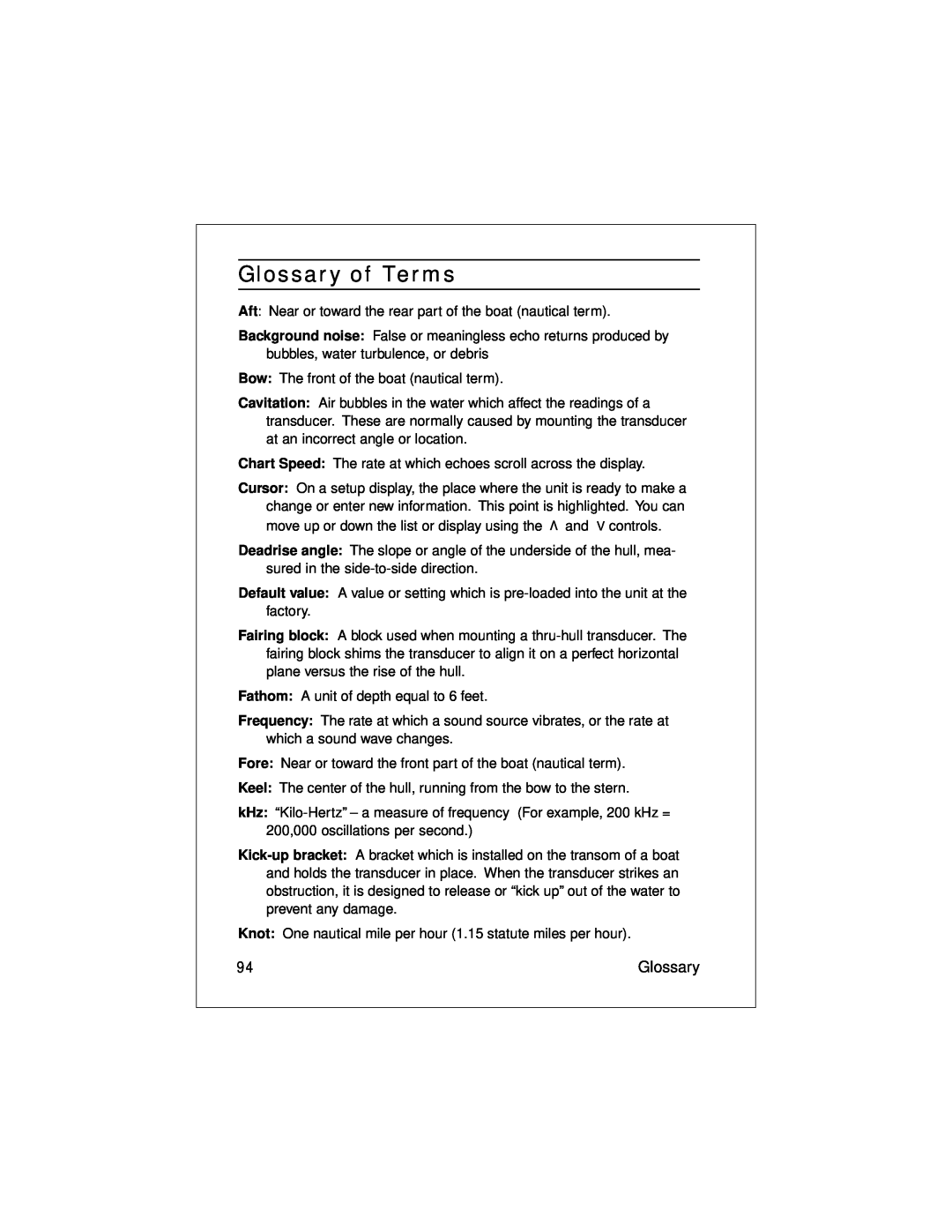
Glossary of Terms
Aft: Near or toward the rear part of the boat (nautical term).
Background noise: False or meaningless echo returns produced by bubbles, water turbulence, or debris
Bow: The front of the boat (nautical term).
Cavitation: Air bubbles in the water which affect the readings of a transducer. These are normally caused by mounting the transducer at an incorrect angle or location.
Chart Speed: The rate at which echoes scroll across the display.
Cursor: On a setup display, the place where the unit is ready to make a change or enter new information. This point is highlighted. You can move up or down the list or display using the < and V controls.
Deadrise angle: The slope or angle of the underside of the hull, mea- sured in the
Default value: A value or setting which is
Fairing block: A block used when mounting a
Fathom: A unit of depth equal to 6 feet.
Frequency: The rate at which a sound source vibrates, or the rate at which a sound wave changes.
Fore: Near or toward the front part of the boat (nautical term).
Keel: The center of the hull, running from the bow to the stern.
kHz:
Knot: One nautical mile per hour (1.15 statute miles per hour).
94 | Glossary |
|
|
